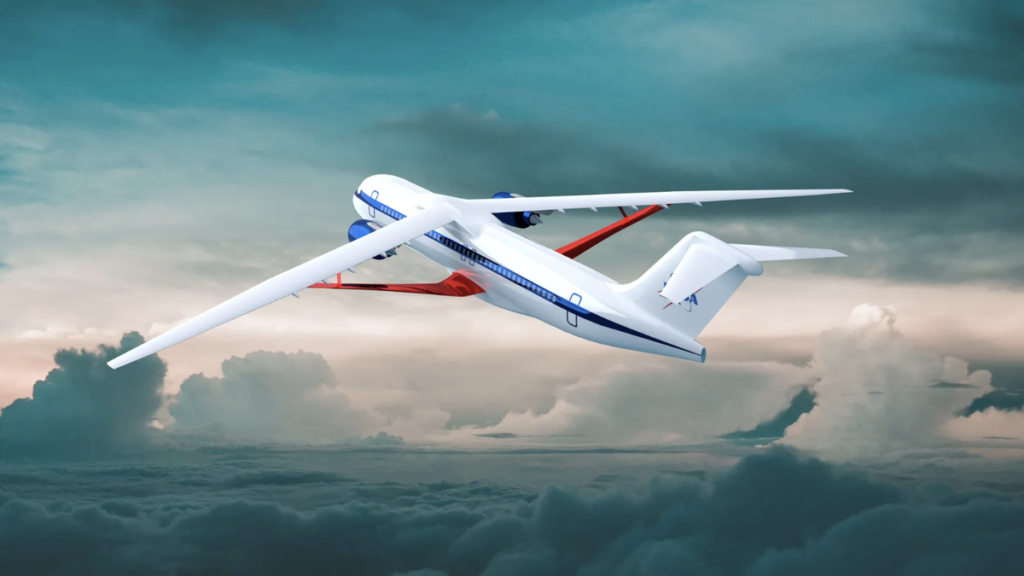NASA's New Design Would Finally Bring Jets Out Of The Jet Age

Illustration: NASA
NASA unveiled its latest X-plane Monday; a strange new design known as a transonic truss-winged aircraft that might just soon be coming to an airport near you in the next decade.
World’s First All-Electric Passenger Plane
The X-66A is the first commercial aircraft design created by NASA specifically to address efficiency. A one-off created under the Sustainable Flight Demonstrator project, this single-aisle plane takes its design cues from gliders, with the wings perched on top of the fuselage with struts holding the wings in place. Here’s how the design works, according to Vox:
“If you think that, or have the perception that, aviation hasn’t been working on sustainability or environmentally friendliness, that’s a bad perception because every generation of aircraft that’s come out has been 15, 20, 25 percent better than the one it replaces,” Rich Wahls, NASA’s sustainable flight national partnership mission integration manager, told Vox in January. “What we’re trying to do now is skip a generation.”
The big idea behind the transonic truss-braced wing concept is an update to the aircraft configuration, or the plane’s architecture. Unlike the low-wing design that dominates the commercial aircraft configuration today, the new Boeing design has wings that stretch over the top of the plane’s tubular body. This reduces drag, but it also allows for a wider variety of propulsion systems, from bigger jet engines to exposed propellers. It’s also fast. The “transonic” part of the concept’s name refers to its ability to fly just shy of the speed of sound, or around 600 miles per hour.
Flying is really dirty, with four percent of global emissions coming from commercial aircraft. As air travel gains in popularity, that slice of the carbon pie is only set to keep growing. Of course, design isn’t the only place where aircraft engineers can save on carbon. The real kicker will be figuring out a more efficient and cleaner propulsion system. Electric doesn’t really work for aircraft as the heavy batteries makes producing the power to lift those batteries difficult. Some airplane manufacturers, like Rolls-Royce, are experimenting with engines that use 100 percent biofuel.
NASA estimates that testing of the X-66A will wrap up later in the 2020s, with tires on tarmac sometime in the 2030s.







